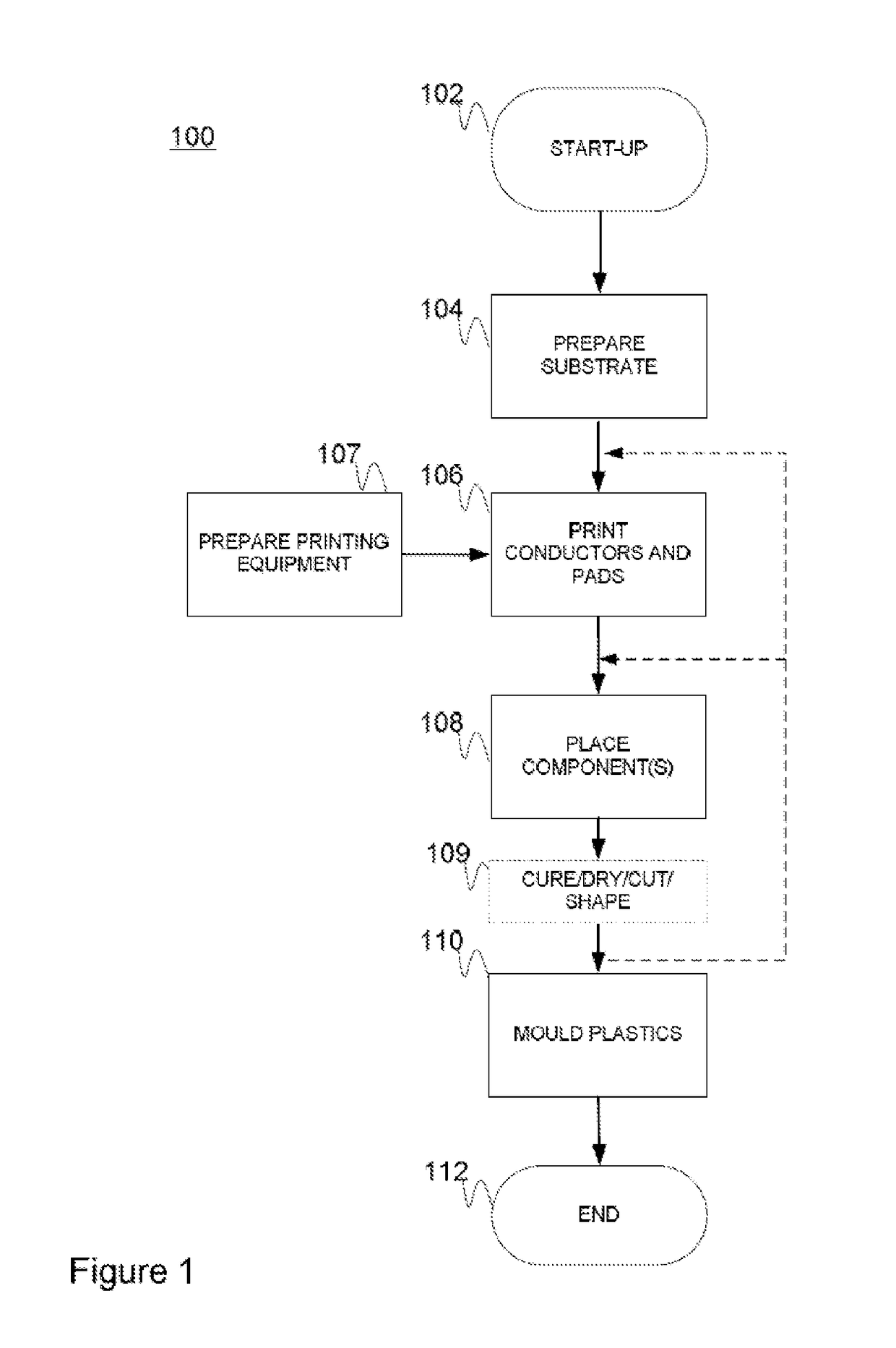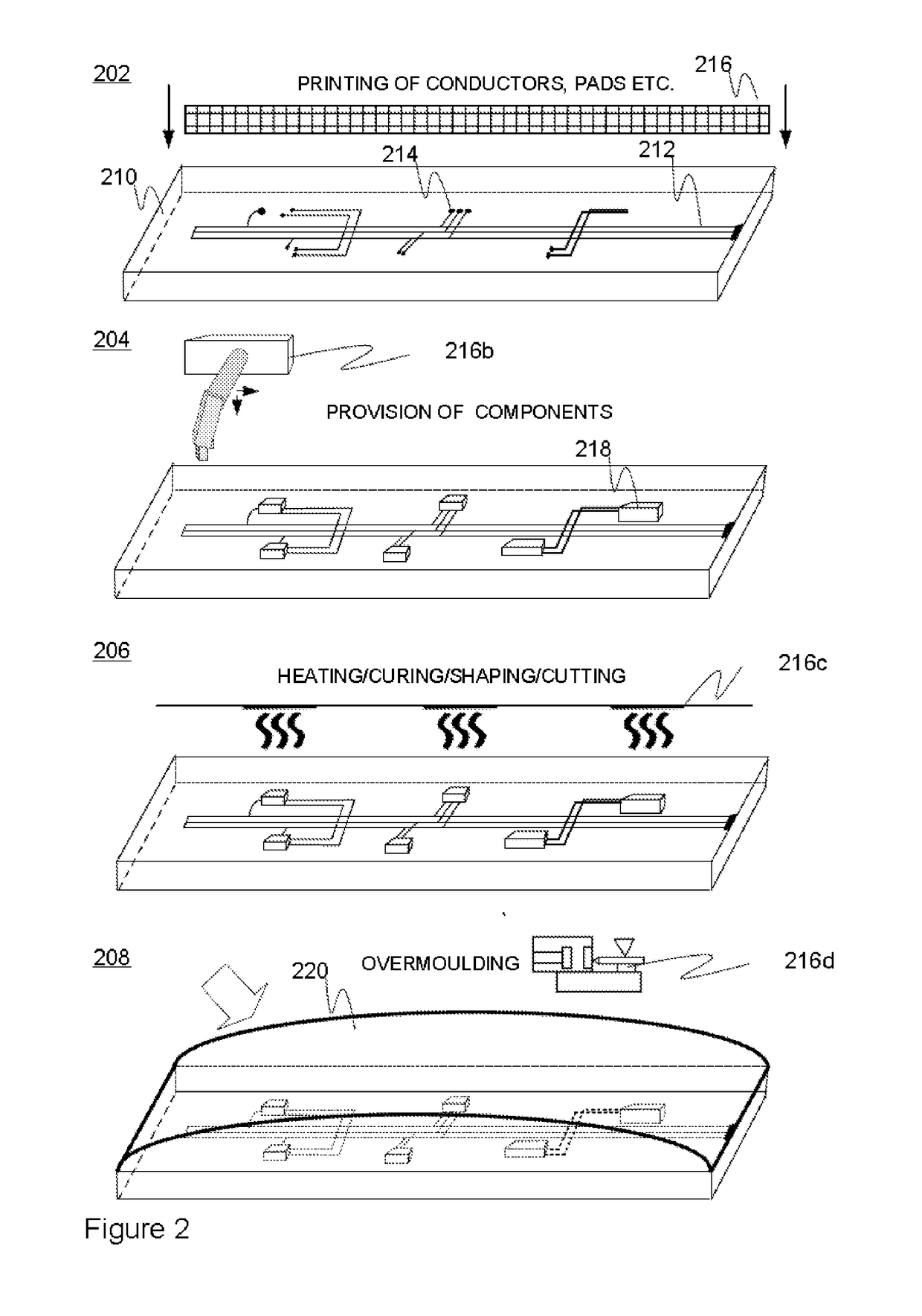Method for manufacturing electronic products, related arrangement and product
a technology of electronic products and related arrangements, applied in the direction of dielectric characteristics, dielectric pattern formation, dielectric association of printed circuit non-printed electric components, etc., can solve the problems of insufficient economic and reliable, large amount of components cannot be printed, solder paste and conductive adhesive based solutions have turned out to be problematic, etc., to achieve simple, short and cost-efficient overall process, reduce and the effect of reducing the number of manufacturing steps
- Summary
- Abstract
- Description
- Claims
- Application Information
AI Technical Summary
Benefits of technology
Problems solved by technology
Method used
Image
Examples
Embodiment Construction
[0042]With reference to FIG. 1, a flow diagram of one feasible embodiment for manufacturing an electronic product, or device, in accordance with the present invention is shown.
[0043]At 102, referring to a start-up phase, the necessary preparatory actions such as material, element and tools general selection, acquisition and preprocessing take place. Circuit layout may be defined in the light of product specification and other constraints. Process parameters may be tested, tweaked and optimized.
[0044]Conductive ink(s) is / are acquired. Examples of commonly available conductive inks include e.g. DuPont 5000™ and Asahi SW1600C™.
[0045]Advantageously, the selected inks are passive in contrast to e g many conductive adhesives, and bear rheological properties, e.g. viscosity or surface tension, which enable sufficient flow during ejection or squeezing, i.e. ink dispensing / printing, but prevent the ink from spreading too easily into adjacent materials and structures afterwards. Yet, drying c...
PUM
| Property | Measurement | Unit |
|---|---|---|
| thickness | aaaaa | aaaaa |
| pressure | aaaaa | aaaaa |
| temperature | aaaaa | aaaaa |
Abstract
Description
Claims
Application Information
 Login to View More
Login to View More - R&D
- Intellectual Property
- Life Sciences
- Materials
- Tech Scout
- Unparalleled Data Quality
- Higher Quality Content
- 60% Fewer Hallucinations
Browse by: Latest US Patents, China's latest patents, Technical Efficacy Thesaurus, Application Domain, Technology Topic, Popular Technical Reports.
© 2025 PatSnap. All rights reserved.Legal|Privacy policy|Modern Slavery Act Transparency Statement|Sitemap|About US| Contact US: help@patsnap.com


